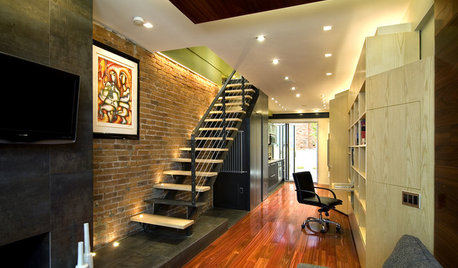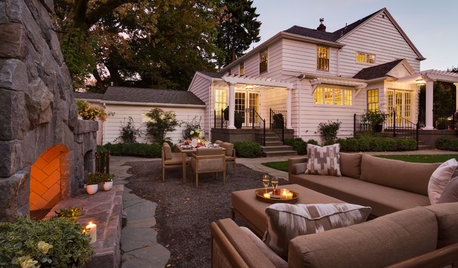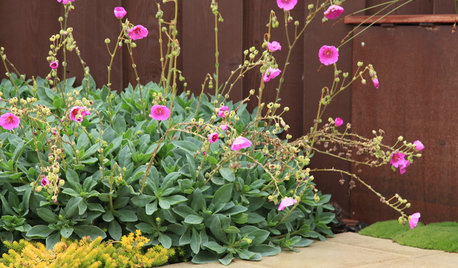Upright, low, narrow camellia for Wash DC area
GeeDavey
15 years ago
Related Stories

SIDE YARD IDEASNarrow Trees for Tight Garden Spaces
Boost interest in a side yard or another space-challenged area with the fragrance and color of these columnar trees
Full Story
HOUZZ TOURSDesign Lessons From a 10-Foot-Wide Row House
How to make a very narrow home open, bright and comfortable? Go vertical, focus on storage, work your materials and embrace modern design
Full Story
GARDENING GUIDES10 Top Native Plants for the U.S. Southeast
For a low-maintenance and wildlife-friendly landscape, use Southern natives that withstand heat and humidity
Full Story
GARDENING AND LANDSCAPINGHouzz Survey: See What Homeowners Are Doing With Their Landscapes Now
Homeowners are busy putting in low-maintenance landscapes designed for outdoor living, according to the 2015 Houzz landscaping survey
Full Story
PLANTING IDEASStretch the Budget, Seasons and Style: Add Conifers to Your Containers
Small, low-maintenance conifers are a boon for mixed containers — and you can transplant them to your garden when they’ve outgrown the pot
Full Story
GROUND COVERS10 Succulents That Make Pretty, Easy-Care Ground Covers
These low-growing succulents create interest in the drought-tolerant garden
Full Story
ORGANIZINGOrganizing Secrets: It’s the Little Things
Get these 8 small areas under control for a major boost in overall tidiness at home
Full Story
KITCHEN DESIGN9 Ways to Save on Your Kitchen Remodel
A designer shares key areas where you can economize — and still get the kitchen of your dreams
Full Story
DECORATING GUIDES8 Clever Ideas for the Space Under the Stairs
This small area can be an ideal spot for a reading nook, playspace, mini office and more
Full Story
SPRING GARDENING7 Spectacular and Practical Spring-Flowering Trees
Put on a beauteous show in the garden with a landscape tree awash in flowers — just do your homework first
Full Story





jeff_al
Dave in NoVA • N. Virginia • zone 7A
Related Professionals
Ballwin Landscape Architects & Landscape Designers · Jennings Landscape Architects & Landscape Designers · Brockton Landscape Contractors · College Park Landscape Contractors · Harrisburg Landscape Contractors · Kerman Landscape Contractors · Lake Zurich Landscape Contractors · Lakeville Landscape Contractors · Milton Landscape Contractors · North Lauderdale Landscape Contractors · Paramount Landscape Contractors · Rockland Landscape Contractors · Folsom Swimming Pool Builders · Huntsville Swimming Pool Builders · Ontario Swimming Pool BuildersGeeDaveyOriginal Author
jeff_al
greenguy1
Embothrium